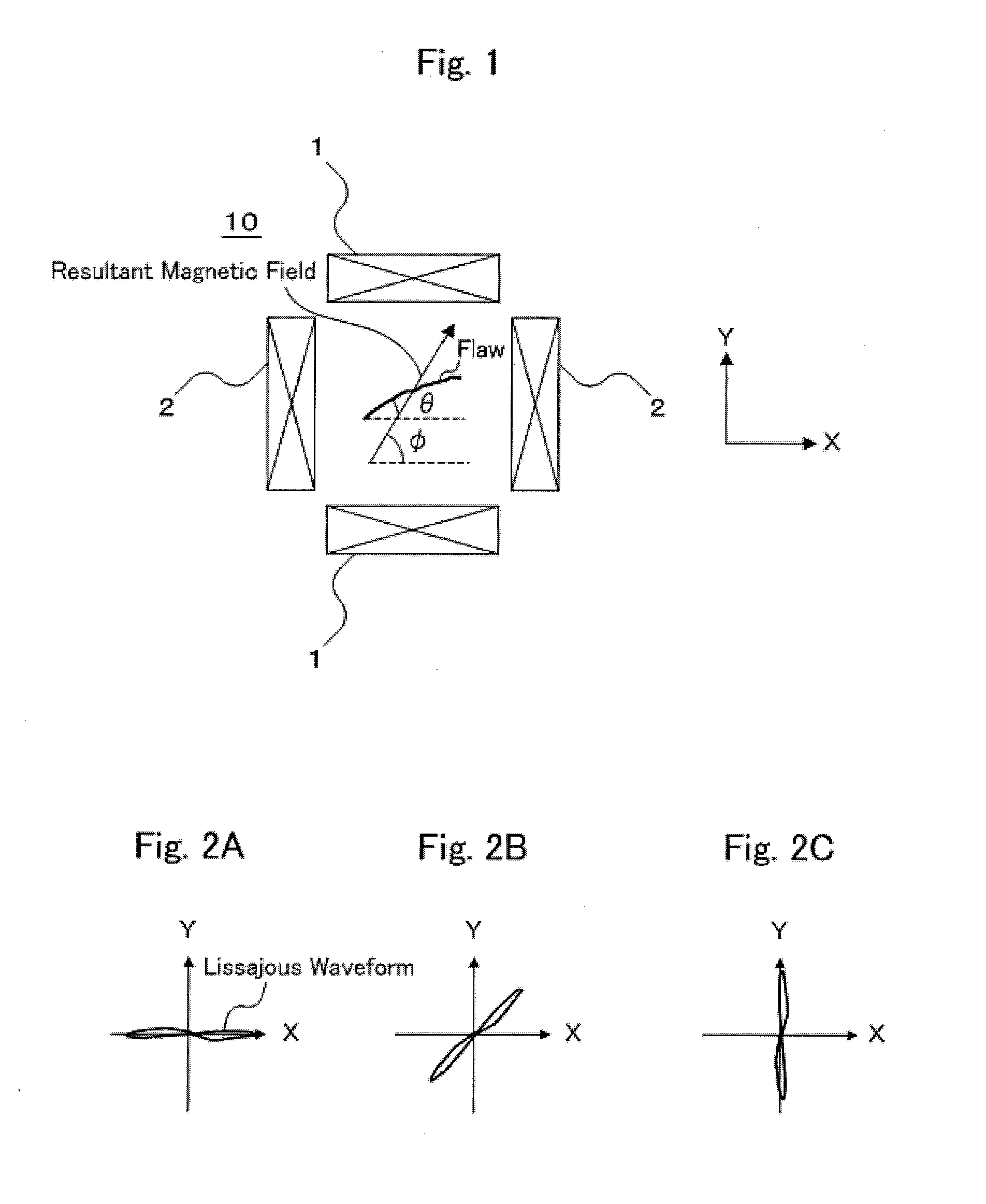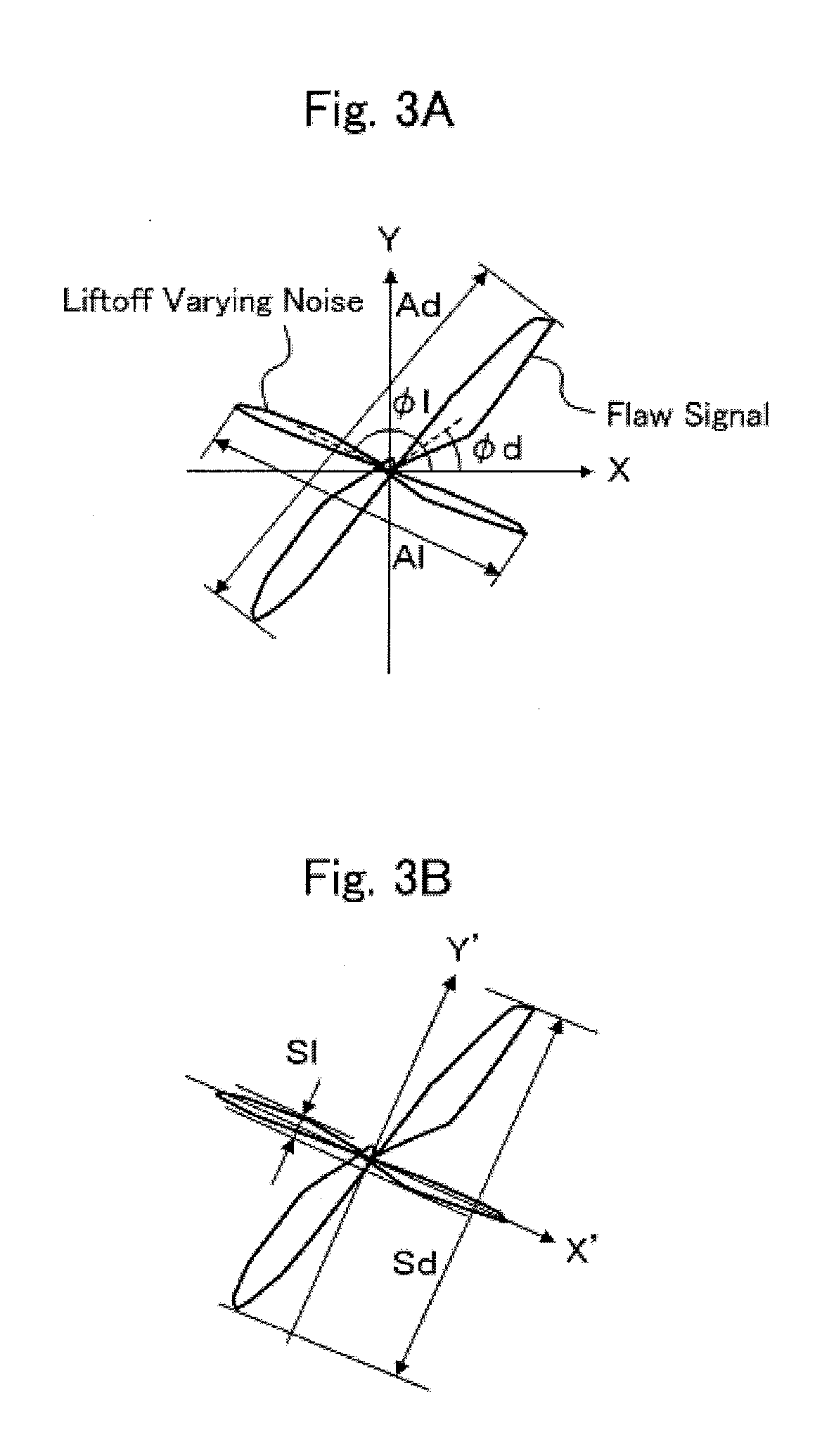Magnetic testing method and magnetic testing apparatus
a testing method and magnetic technology, applied in the field of magnetic testing methods and magnetic testing apparatuses, can solve the problems of lowering the s/n ratio of fault detection, not being able to estimate the angle information of the flaw, and not being able to use the phase analysis method
- Summary
- Abstract
- Description
- Claims
- Application Information
AI Technical Summary
Benefits of technology
Problems solved by technology
Method used
Image
Examples
Embodiment Construction
[0059]A description will be given below of an embodiment in accordance with the present invention appropriately with reference to the accompanying drawings.
[0060]FIG. 9 is a block diagram showing a schematic configuration of a magnetic testing apparatus in accordance with an embodiment of the present invention. FIG. 10 shows a schematic outer appearance view of a testing probe shown in FIG. 9. As shown in FIG. 9, a magnetic testing apparatus 100 in accordance with the present embodiment is provided with a magnetizing device 1 applying a rotating magnetic field to a material to be tested, a detecting device 2 detecting a testing signal generated by the rotating magnetic field, and a signal processing device 3 applying a signal processing to the testing signal.
[0061]The magnetizing device 1 is provided with an exciting coil 11 applying an exciting current for generating the rotating magnetic field. As shown in FIG. 10, the exciting coil 11 is provided with an X-direction exciting coil...
PUM
| Property | Measurement | Unit |
|---|---|---|
| angle | aaaaa | aaaaa |
| angle | aaaaa | aaaaa |
| angle | aaaaa | aaaaa |
Abstract
Description
Claims
Application Information
 Login to View More
Login to View More - R&D
- Intellectual Property
- Life Sciences
- Materials
- Tech Scout
- Unparalleled Data Quality
- Higher Quality Content
- 60% Fewer Hallucinations
Browse by: Latest US Patents, China's latest patents, Technical Efficacy Thesaurus, Application Domain, Technology Topic, Popular Technical Reports.
© 2025 PatSnap. All rights reserved.Legal|Privacy policy|Modern Slavery Act Transparency Statement|Sitemap|About US| Contact US: help@patsnap.com



